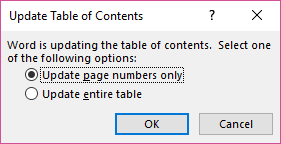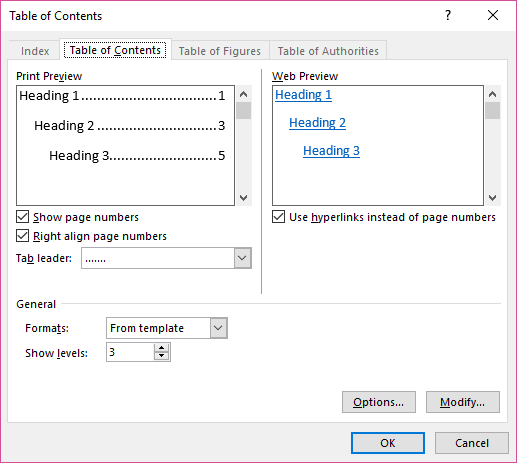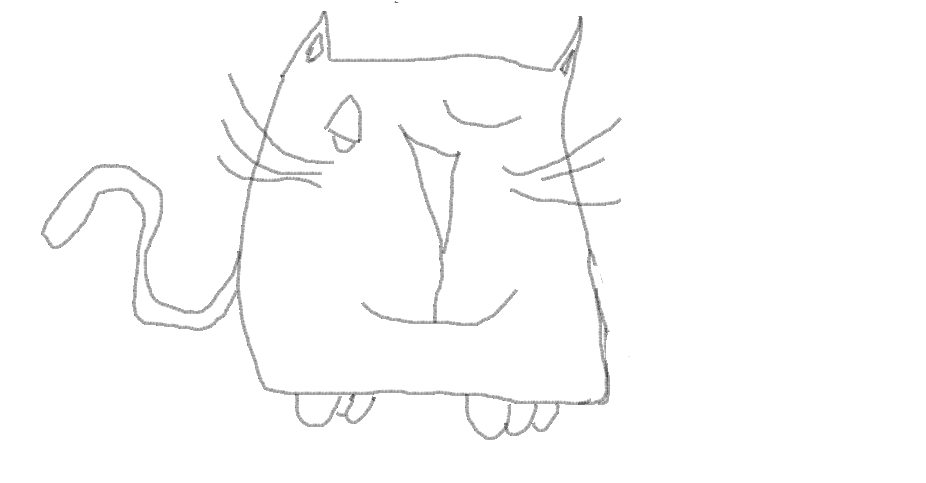Using styles, as described here, as a standard policy in your longer, more elaborate Word documents really opens up your horizons, and facilitates the simple creation of many additional features. One of the easiest and most impressive of these is a table of contents. If you have the foresight to use styles as a standard formatting feature (i.e. Heading 1, Heading 2, Heading 3 etc.), you can then simply insert the Table of Contents field on your chosen page at the beginning of the document and have it automatically compile a table of contents, using the headings and subheadings already present in your document. This would provide you with an enormous saving of time and effort, compared with the tedious task of having to manually type up your own table of contents in neatly aligned columns.
You will find the Table of Contents command on the far left of the ribbon attached to the References tab:

If you select either of the Automatic Table options (1 or 2) on the attached menu, the Table of Contents field will then go to work to automatically create the table of contents as you watch.
One of the principal virtues of this feature is the ability to easily update and regenerate the table, in the event that you modify your document after creating the table. If you add new content with new headings or move the location of your document’s content around in a way that impacts the page numbering, you don’t need to create your contents table anew. You can instead simply update the Table of Contents field, and have it automatically regenerate itself to incorporate and take account of any recent document alterations.
You can perform such an update via the right mouse menu, Simply right click somewhere over your Table of Contents and select Update Field. You will then be asked whether you wish to re-create the entire table or only the page numbering. (You can access this action even faster via the equivalent keyboard shortcut, the F9 key):

You can also customise the built-in automatic tables of content if you wish; choose a different style for its appearance and, if need be, specify precisely which Heading styles you wish to include in or exclude from your table. You can simply select the Custom Table of Contents option from the Table of Contents menu to access a dialog box that presents you with these choices. You can modify your Heading Style selection via the Options button in the lower right-hand corner.

Like many other fields that are available in Word, the Table of Contents gives you a great method of automating, and then flexibly updating, a key feature of your longer, more involved, elaborate Word documents.


